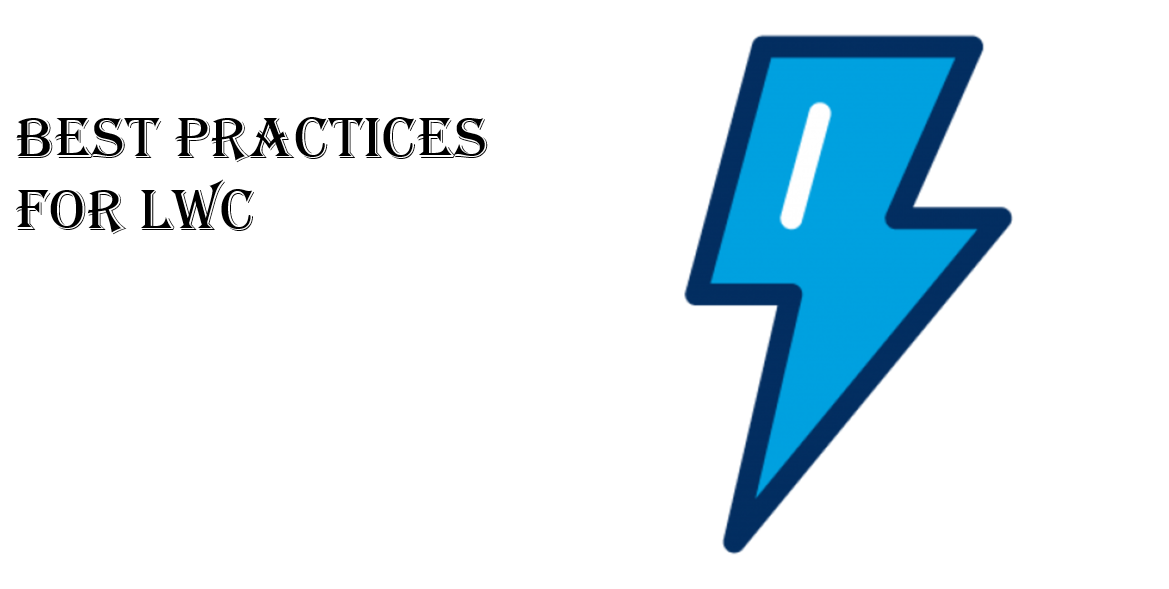
Best Practices for LWC
Suraj Ghodmare
Salesforce certified Application architect, Helping businesses unlock the full potential of Salesforce as a Technical Lead, delivering innovative solutions and seamless integrations
Best Practices for LWC
LWC stands for Lightning Web Components, a modern framework for building web applications on the Salesforce platform. LWC uses standard web technologies such as HTML, CSS, and JavaScript, and leverages the benefits of web components, such as encapsulation, reusability, and interoperability.
In this blog post, I will share some best practices for developing LWC applications, based on my experience and the official documentation. These best practices are not exhaustive, but they can help you write clean, maintainable, and performant code.
1. Use camelCase for naming files and variables. This is the standard convention for JavaScript and LWC. For example, use `myComponent.js` for the file name and `myProperty` for the property name.
2. Use kebab-case for naming custom elements and attributes. This is the standard convention for web components and HTML. For example, use `<my-component>` for the custom element tag and `my-attribute` for the attribute name.
3. Use @api decorator to expose public properties and methods. This allows other components to access and manipulate your component's data and behavior. For example, use `@api myProperty` to expose a public property and `@api myMethod()` to expose a public method.
4. Use @track decorator to track private properties that affect the template. This enables reactive rendering when the property value changes. For example, use `@track myProperty` to track a private property that is used in the template.
领英推荐
5. Use @wire decorator to connect to Salesforce data and services. This allows you to declaratively fetch data from Apex methods, SOQL queries, or Lightning Data Service. For example, use `@wire(getContacts, {accountId: '$recordId'}) contacts` to get the contacts related to a record.
6. Use getters and setters to define computed properties and custom logic. This allows you to dynamically calculate values based on other properties or external factors. For example, use `get fullName()` to return the full name of a contact based on the first name and last name properties.
7. Use lifecycle hooks to perform actions at different stages of the component's life cycle. This allows you to execute code when the component is inserted, rendered, updated, or removed from the DOM. For example, use `connectedCallback()` to initialize data or register event listeners when the component is inserted into the DOM.
8. Use custom events to communicate with parent and sibling components. This allows you to pass data and trigger actions across components in a loosely coupled way. For example, use `this.dispatchEvent(new CustomEvent('select', {detail: this.contact}))` to fire a custom event with a payload when a contact is selected.
9. Use standard HTML elements and attributes whenever possible. This allows you to leverage the native functionality and accessibility of the browser. For example, use `<button>` for buttons, `<input>` for inputs, and `aria-label` for accessibility labels.
10. Use base Lightning components for common UI elements and patterns. This allows you to reuse the existing components that are optimized for performance, usability, and consistency. For example, use `<lightning-card>` for cards, `<lightning-datatable>` for tables, and `<lightning-icon>` for icons.
These are some of the best practices that I follow when developing LWC applications. I hope they can help you improve your code quality and productivity as well. If you have any questions or feedback, please leave a comment below or contact me at my email address.